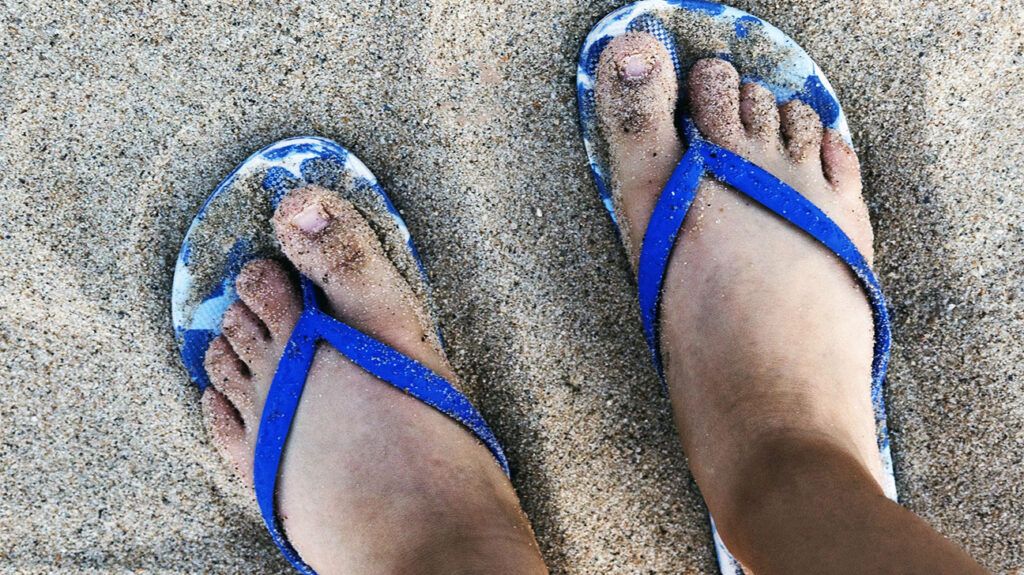If a toenail is already ingrown, a person should avoid cutting it at home, as this can make it worse or cause infections. However, healthcare professionals can help remove an ingrown toenail. It may also be possible to prevent them from occurring.
An ingrown toenail develops when the edge of a toenail, usually on the big toe, grows into the skin. Ingrown toenails can be very painful.
Although the internet offers advice for cutting out ingrown toenails, doing so at home can make the problem worse and increase the risk of infection. Cutting a toenail before it grows into the skin can prevent it from becoming ingrown.
This article looks at the safety considerations of cutting an ingrown nail at home, physician care, and how people can cut their toenails to avoid ingrowing.

If a toenail is at risk of becoming ingrown, people can try the
- Trim the nails straight across. Avoid making them rounded or pointed.
- Avoid cutting the nails too short. Leave them long enough that the corners lie against the skin loosely.
- Use scissors or clippers specifically designed for toenails.
Healthcare professionals do not recommend that people try to cut toenails that have already ingrown at home. If the nail is very painful, getting worse, or showing signs of infection, a person should see their healthcare professional for advice on how best to treat the issue.
According to the American College of Foot and Ankle Surgeons, people should avoid attempting “bathroom surgery.” This is because cutting the nail repeatedly or too short can make ingrowing worse over time and increase the risk of future ingrown nails.
The American Academy of Dermatology also recommends that people avoid digging out or clipping an already ingrown nail.
Sometimes, an ingrown nail can break the skin. This makes it easier for bacteria and other microbes to enter the skin, potentially causing a painful infection.
Attempting to cut an ingrown nail can further increase this risk, as it can damage the skin further — especially if the toenail is very embedded in the skin. Cutting the edge of the toenail too short may also increase the risk of another ingrown toenail.
People can use the following strategies to help treat an ingrown toenail at home:
- Take over-the-counter (OTC) medications, such as acetaminophen or ibuprofen, to help with the pain.
- Try a numbing cream or spray. This will not treat any underlying infection, but it can help with the pain if there is a wound.
- Soak the foot in warm water several times per day. People can also add Epsom salt to help with the pain and swelling.
- Gently massage the foot and the toenail. This improves blood flow to the area, which may help with pain while speeding the healing process.
- Dry the foot after soaking it, and apply an antibacterial cream to reduce the risk of infection.
- Wear loose-fitting shoes with open toes until the ingrown toenail heals.
People should not cut a notch in the nail or repeatedly trim the borders of the nail. These strategies will not reduce the risk of ingrown toenails.
Some sources recommend placing cotton or dental floss under the ingrown portion of the toenail to relieve pressure. However, the American College of Foot and Ankle Surgeons warns that putting cotton under the nail does not relieve pain and may increase the risk of infection.
A healthcare professional can help a person decide whether the toenail needs trimming or other treatment.
When an ingrown toenail is very painful, makes walking difficult, or shows signs of an infection, a healthcare professional can treat the nail.
They may remove part or all of the toenail to help treat an ingrown toenail. They may also remove part of the underlying nail bed and, in some cases, part of the growth center. These minor surgeries are effective treatments for ingrown nails.
It is important for a healthcare professional to perform this procedure. They will use sterilized equipment to reduce the risk of infection. When they trim or remove part or all of the nail, they may inject the area with a numbing solution, so the individual will not feel any pain. Home removal, by contrast, can be extremely painful.
In some cases, a person may need antibiotics to treat an infection. Some symptoms that indicate a toenail infection include:
A few simple strategies can reduce the risk of ingrown toenails:
- Use clippers specifically designed for toenails, since these are the right shape and provide enough force to quickly trim the nails.
- Wash nail clippers before and after use. Using dirty clippers can introduce bacteria and infections into the skin under the nail.
- Do not cut the toenails very short. The nail should not be significantly shorter than the toe. Cutting a toenail so short that it hurts or is much shorter than the toe increases the risk of the toenail growing into an unusual shape.
- Cut the toenails straight across. Rounded or pointed shapes create misshapen edges that may grow into the skin.
- Wear shoes that fit well. Shoes that are too tight can pinch the toes, potentially causing an ingrown toenail. Shoes with pointed toes may also increase the risk, particularly when they are uncomfortable or pinch the toes.
Some people are more vulnerable to ingrown toenails than others, either due to genetic or medical conditions.
For example, diabetes and nerve damage
Repeatedly getting ingrown toenails can signal a health condition. People who repeatedly get ingrown toenails, especially with infections, should see a healthcare professional.
There is advice on in internet about cutting an ingrown toenail at home. However, it is best to avoid doing this as it can lead to pain and infection.
Gentler home remedies can work well to reduce pain. A person should visit a healthcare professional if the toenail has an infection or does not heal on its own.
